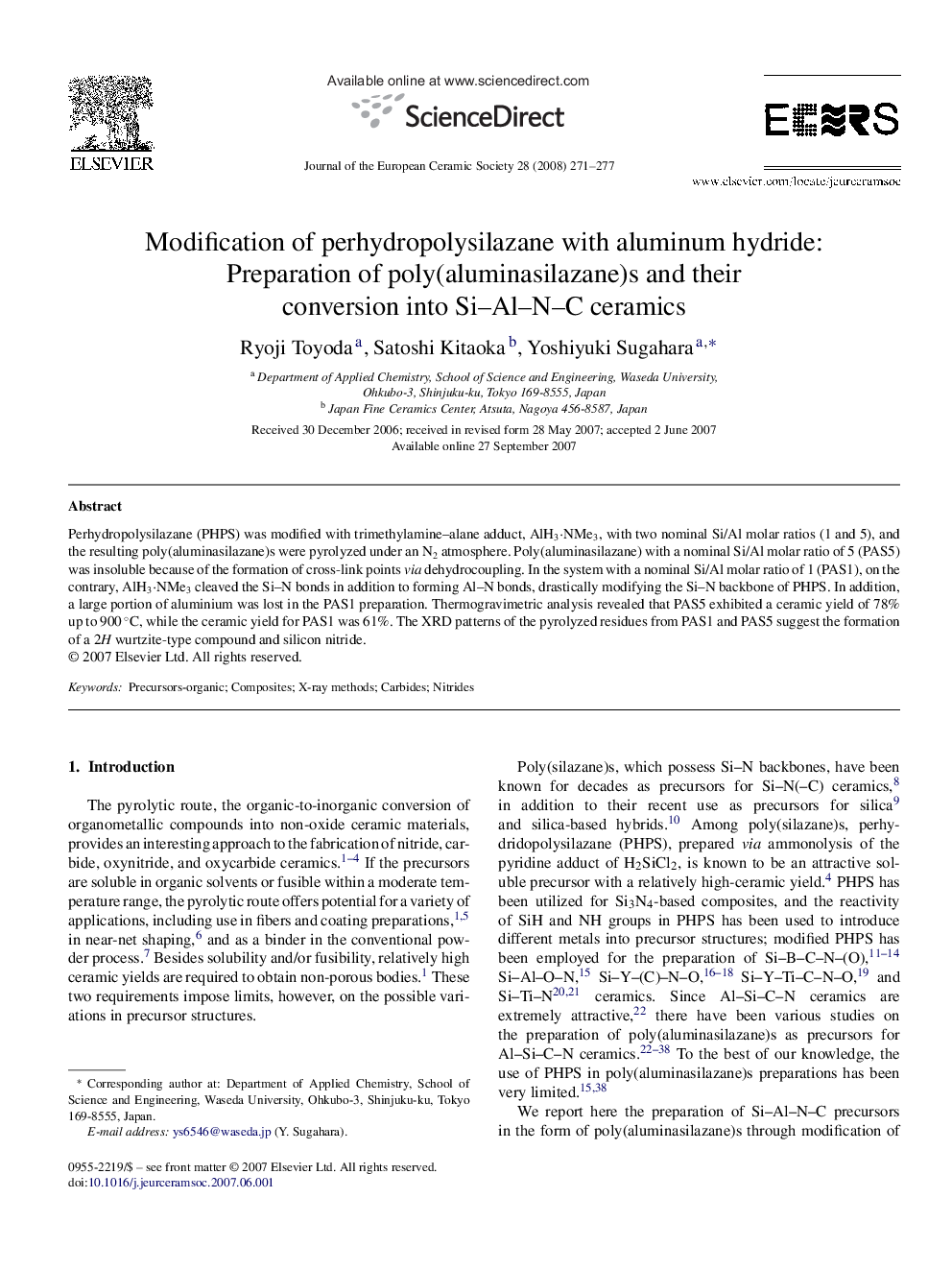| Article ID | Journal | Published Year | Pages | File Type |
|---|---|---|---|---|
| 1477589 | Journal of the European Ceramic Society | 2008 | 7 Pages |
Perhydropolysilazane (PHPS) was modified with trimethylamine–alane adduct, AlH3·NMe3, with two nominal Si/Al molar ratios (1 and 5), and the resulting poly(aluminasilazane)s were pyrolyzed under an N2 atmosphere. Poly(aluminasilazane) with a nominal Si/Al molar ratio of 5 (PAS5) was insoluble because of the formation of cross-link points via dehydrocoupling. In the system with a nominal Si/Al molar ratio of 1 (PAS1), on the contrary, AlH3·NMe3 cleaved the Si–N bonds in addition to forming Al–N bonds, drastically modifying the Si–N backbone of PHPS. In addition, a large portion of aluminium was lost in the PAS1 preparation. Thermogravimetric analysis revealed that PAS5 exhibited a ceramic yield of 78% up to 900 °C, while the ceramic yield for PAS1 was 61%. The XRD patterns of the pyrolyzed residues from PAS1 and PAS5 suggest the formation of a 2H wurtzite-type compound and silicon nitride.
